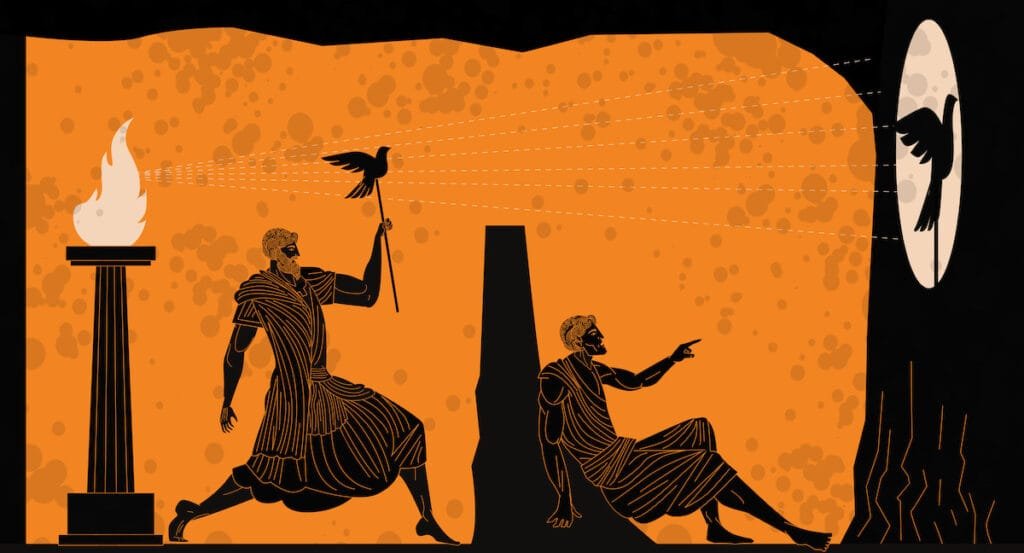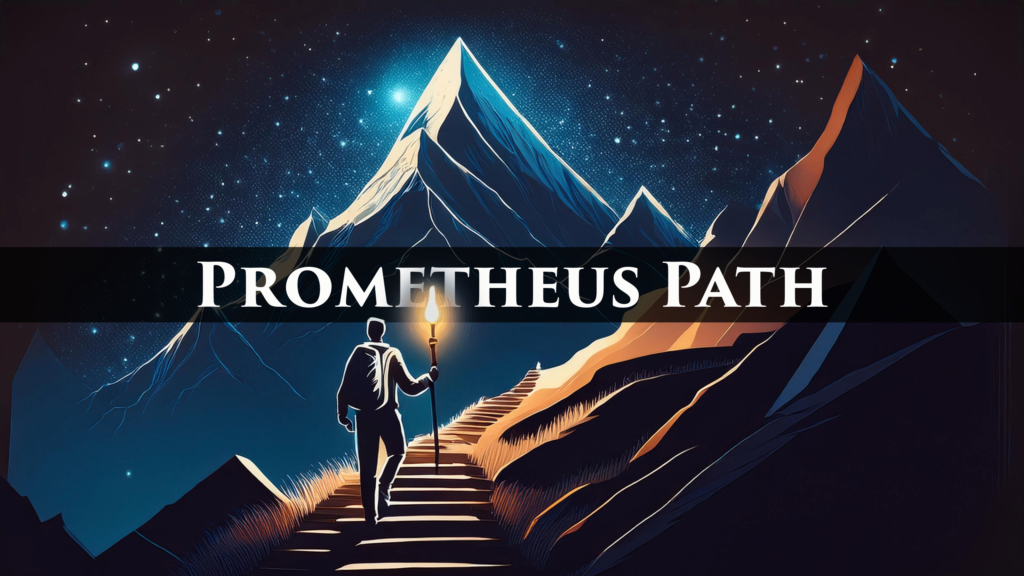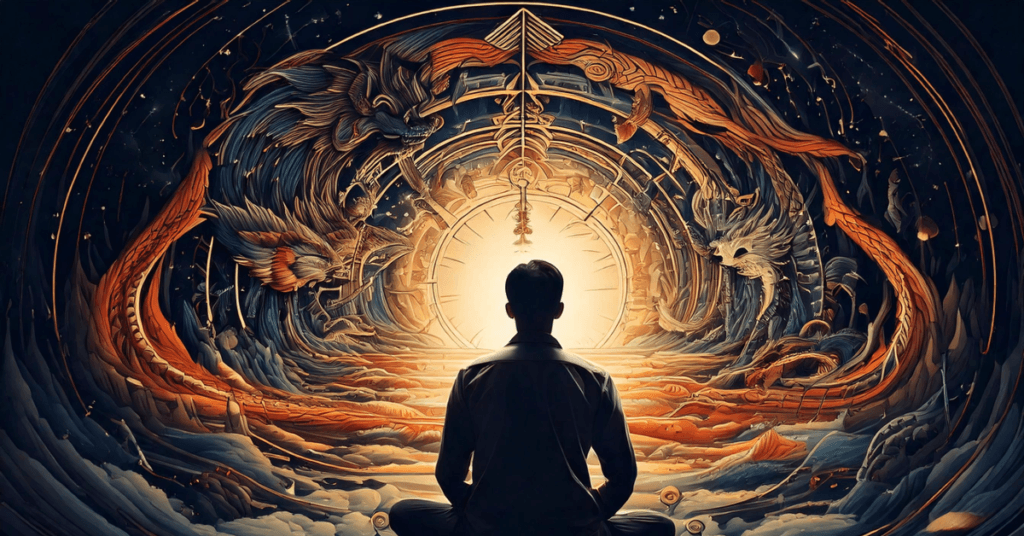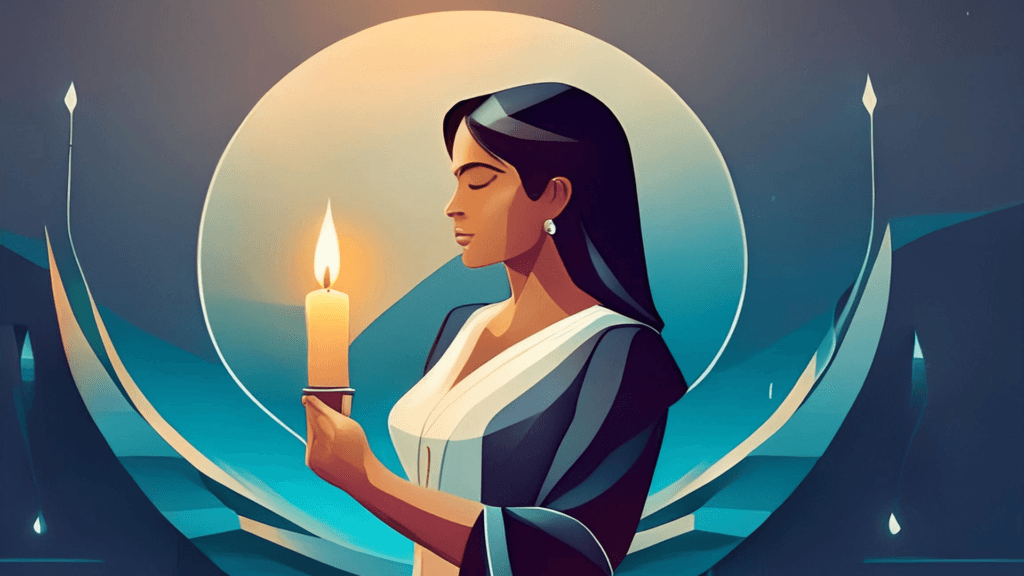Once upon a time, in a world woven from stories, there lived a Seeker named Eidan. He was a traveler of tales, venturing across lands both ancient and modern, searching for the wisdom hidden within myths. It was said that those who understood the stories of old could unlock secrets to navigate life’s challenges, find purpose, and uncover the path to a meaningful existence.

Eidan’s journey began in a village where the people had forgotten the power of myths. They lived mundane lives, disconnected from the legends that once guided their ancestors. The elders spoke of tales lost to time—of gods, heroes, and symbols—but few paid attention. Determined to restore these forgotten truths, Eidan set out to find the Great Archive, a place where all stories, ancient and new, converged.
The First Tale: How Myths Shape Human Behavior
As Eidan traveled, he met a wise storyteller named Mira. She shared with him the tale of the First Flame—a fire kindled by the gods to illuminate the path for humanity. “This flame,” Mira explained, “represents the stories we tell. It shows us who we are and who we can become. But without stories, we walk in darkness.”
Eidan pondered her words. “Why do we need these stories?” he asked.
Mira smiled. “Because they teach us life lessons from mythology. The tales of Zeus and Thor aren’t just about gods’ adventures—they reflect our struggles, our resilience, and our desire for meaning. Even today, modern myths like The Lord of the Rings or superhero epics carry those same themes of courage and sacrifice.”
Inspired, Eidan vowed to carry the First Flame forward, ensuring it would never be extinguished.
The Second Tale: The Archetypes Within Us
In the next town, Eidan encountered a scholar named Jonas, who spoke of archetypes—universal characters living within every story.
“Each of us,” Jonas said, “carries the Hero, the Mentor, and the Shadow. The Hero faces trials, the Mentor offers wisdom, and the Shadow represents our fears. These archetypes aren’t just in ancient myths—they live in modern tales too, from Frodo’s journey to destroy the Ring to Spider-Man’s quest for responsibility.”
Eidan listened carefully. “How do these archetypes help us?”
“They guide us,” Jonas replied. “By recognizing them in stories, we see them in ourselves. When you face hardship, remember the Hero’s Journey—each trial transforms you. When you seek advice, look for the Mentor. And when you confront your fears, remember that the Shadow must be faced to grow.”
Eidan thanked Jonas and continued on, understanding that these archetypes were keys to unlocking his own journey.
The Third Tale: Belief and Benefit
One night, Eidan camped beneath the stars and was visited by a mysterious figure known only as the Dreamer. The Dreamer told him a curious story.
“Long ago,” said the Dreamer, “there was a man who believed in Santa Claus. As a child, he saw magic in the world. When he grew older and learned the truth, he felt disappointed. But then he realized something important: the magic wasn’t in Santa himself, but in the spirit of generosity and wonder. The myth endured, whether or not it was real.”
Eidan nodded. “So myths don’t need to be literally true to hold value.”
The Dreamer smiled. “Exactly. The value of mythology lies not in its factual accuracy but in the lessons it teaches. Whether it’s a religious parable or a superhero tale, myths remind us of universal truths—about kindness, courage, and transformation.”
With these words, the Dreamer vanished into the night, leaving Eidan to reflect on the power of belief.
The Fourth Tale: Cultural Myths and Their Parallels
Eidan’s journey brought him to the Great Archive at last. There, he found scrolls detailing myths from every culture—Greek, Norse, Hindu, Japanese, and more. Each scroll contained a story, and each story had a modern counterpart.
He read of Perseus defeating Medusa and saw Spider-Man in his mind’s eye. He learned of Ragnarök, the Norse apocalypse, and thought of Tony Stark’s sacrifice in Avengers: Endgame. He read of Krishna’s teachings in the Bhagavad Gita and recalled the perseverance of Chris Gardner in The Pursuit of Happyness.
“These are life lessons from mythology,” Eidan whispered. “Stories that cross time and cultures, reminding us of who we are and what we can achieve.”
The Fifth Tale: Religious Myths and Shared Values
In the Archive’s deepest chamber, Eidan discovered scrolls of religious myths. He read of the Creation Story, the life of Jesus, and the Prodigal Son. These stories, he realized, were foundational myths that shaped moral frameworks and connected people to divine purpose.
“These myths teach eternal truths,” Eidan said. “They resonate with core values—faith, family, forgiveness—and inspire us to live with purpose.”
He saw parallels in other traditions too: the Buddha’s enlightenment, Moses’ journey through the wilderness, and the parables of Krishna.
The Sixth Tale: Modern Myths for a Modern World
Finally, Eidan turned to the scrolls of modern myths—superheroes, sci-fi epics, and fantasy sagas. He read of Captain America’s integrity, Black Panther’s legacy, Harry Potter’s courage, and Luke Skywalker’s quest for identity.
“These stories aren’t just entertainment,” Eidan realized. “They are cultural touchstones that inspire resilience, unity, and hope.”
The scrolls taught him that myths evolve, but their essence remains the same. They guide us through our struggles, teach us to overcome adversity, and connect us to a greater narrative.
Conclusion: Your Life as a Myth
As Eidan left the Great Archive, he carried the stories with him, knowing they were more than words on a page. They were maps for living meaningfully, offering life lessons from mythology to those who would listen.
Looking up at the stars, he recalled the words of Joseph Campbell: “People say that what we’re all seeking is a meaning for life. I think that what we’re seeking is an experience of being alive.”
Eidan knew that each of us is a storyteller, and our lives are myths in the making. By embracing the lessons of ancient legends, religious parables, and modern heroes, we can find purpose, transformation, and connection—becoming the heroes of our own stories.
Clearly, this story is entirely made up, but I hope the point is clear. Societies have successfully passed down, values, identities, cultures, and even behaviors through the generations through mythology. We shouldn’t be so quick to dismiss it as merely fanciful fiction as I once did.
Read more about how myths play a foundational role in our search for meaning here: The Meaning Crisis: A Paradox of Purpose in a World of Progress




